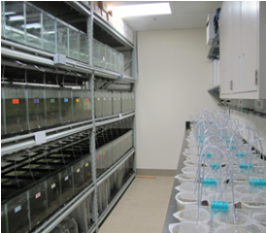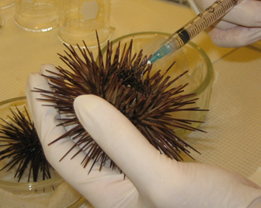 For ocean placement, EA’s Ecotoxicology Laboratory conducts water column bioassays, whole sediment bioassays, and aquatic bioaccumulation studies.
For ocean placement, EA’s Ecotoxicology Laboratory conducts water column bioassays, whole sediment bioassays, and aquatic bioaccumulation studies.
For upland disposal projects, EA’s Ecotoxicology Laboratory conducts plant bioaccumulation studies to assess uptake of contaminants from dredged material into wetland and upland plant tissues. The plant issue data are utilized in ecological risk assessments to assess potential effects to upland biological communities.
EA has conducted dredged material toxicity testing for the U.S. Army Corps of Engineers (USACE) Baltimore, Mobile, New York, Norfolk, and Savannah districts, as well as the Naval Facilities Engineering Command. EA is also an approved laboratory for Dredged Material Toxicity Testing for USACE–New England District.
Routine dredged material toxicity tests performed at EA include:
- Macoma nasuta (Bioaccumulation)

- Nereis virens (Bioaccumulation)
- Lumbriculus variegatus (Bioaccumulation)
- Hyalella azteca (Whole Sediment Survival, Growth, and Fecundity)
- Chironomus dilutus (Whole Sediment Survival and Growth)
- Lumbriculus variegatus (Whole Sediment Survival)
- Leptocheirus plumulosus (Whole Sediment Survival, Growth, and Fecundity)
- Ampelisca abdita (Whole Sediment Survival)
- Neanthes arenaceodentata (Whole Survival and Growth)
- Americamysis bahia (Whole Sediment Survival and Growth)
- Repoxynius abronius (Whole Sediment Survival)
- Eohaustorius estuarius (Whole Sediment Survival)
- Americamysis bahia (Elutriate Survival)
- Menidia beryllina (Elutriate Survival)
- Mytilus sp. (Larval Development)
- Strongylocentrotus sp. (Larval Development).
